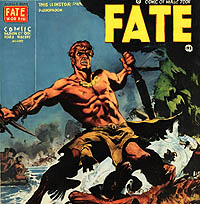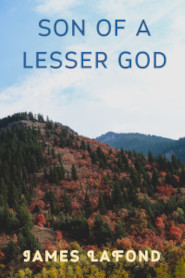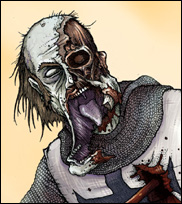Phalanx Question
Inbox Fri, Mar 22, 10:21 AM (6 days ago)
Good morning Mr. Lafond,
You've remarked the old Macedonian Phalanx was better the Roman Legion. That's what I would have expected based on spear length but my Youtube education informed me the Legion made up for it's frontal disadvantage by the ability of its Centurions to maneuver under their own initiate and take advantage of battlefield circumstances.
On the other hand, Spengler remarked that the battles the Romans fought to conquer the Eastern Mediterranean were a joke compared to what the Macedonians had to do, and by the time the Romans handled Carthage the peoples of the Mediterranean were preconquered, which sort of reminds me of how the US inherited a world empire for almost nothing. So for these reasons the Macedonians war machine deserves more credit. I just don't know understand the specifics.
Have you written about this in detail somewhere? I really like to hear your take on it.
Regards,
-Polymachus
Thank you, sir—it's time to geek-out!
I have no reference works or online search capacity so some dates might be off.
There are two big questions here, Phalangite versus Legionnaire and Phallanx versus Legion, heroic army versus civic army, spearman versus swordsman.
There were essentially three versions of each army type:
-The Classic Macedonian Phalanx of Phillip and Alexander, the best expeditionary force in human history, which actually conquered known and unknown portions of the world, from 344-23 B.C., in all terrain against all existing troop types.
-The Mercenary Phalanx of the Diodachi with Elephants, essentially what Pyrrus of Epirus and Hannibal of Carthage used to trounce the Republican legions in 6 major battles in the 200s B.C.
-The Late Macedonian Phalanx, which was barely defeated in the 190s and the 160s B.C. by the Republican Legion.
-Old Republican Legion, which faced the fading Phalanxes of Macedon and Carthage
-The Marian Legion, which got slaughtered in Parthia, lost to Spartacus 8 out of 9 times, took Gaul and toppled the Roman Republic under Julius Caesar.
-The Imperial Legions, which got slaughtered in Germany, Israel and Scotland but pushed the Roman borders to the maximum extent in Britain, Europe and Parthia.
-Finally, with the deterioration of the man power base necessary for the Imperial Legion in the mid-200s the resurgent, Greek-speaking Roman Emperors, developed a hybrid of both Greek and Roman military concepts to hold on for another 200 plus years against the Persians and Barbarians. If placed against each other anachronistically the army forms would sort out from best to worst like so:
-1. Classic Macedonian Phalanx
-2. Mercenary Phalanx
-3. Imperial Legions
-4. Marian Legions
-5. Republican Legions
-6. Late Macedonian Phalanx
Numbers 3 and 6 both failed in the end because the high quality of foot soldier was no longer available in large numbers and these were primarily infantry armies, the Romans more so. This resulted in reducing reliance on infantry and expanding the role of cavalry beyond that of the Classic Macedonian Phalanx, which, when developed by Phillip, was a method of using the Greek infantry concept of the Phalanx [roller, a big pushing machine] not as a decisive arm, but as a basis for striking decisively with a new form of heavy cavalry, reliant on the lance rather than the javelin and sword. The initiative of the Roman Centurian was matched by the initiative of the Macedonian cavalry colonels—Alexander basically had six George Armstrong Custers looking for a hole in the enemy line.
The Phalanx was the anvil of a three-part main battle formation consisting of three key moving parts:
-1. The Phalanx as the walking fortress or base of operation, the anvil
-2. The foot companions as the hinge between the phalanx and the heavy horse
-3. The horse companions were heavy lancers, who were the hammer
Three supporting aspects of the army were necessary for this force to perform at peak levels:
-1. Light and medium cavalry for intelligence, screening and flank security
-2. Specialized light infantry [Agrianian and Cretan] for aggressive screening and turning flanks in mountainous territory
-3. Allied infantry for flank and rear guard security for the phalanx
We have six distinctive troop styles here, not simply the phalangite with his 18-foot sarissa spear, light shield and small sword.
The Macedonian army of Alexander moved 30-60 miles per day.
The legions, of various periods, moved 18-miles per day, but did build a fort every night and were first class engineering units.
In battle the legionnaire covered 3-10 feet of frontage while the phalangite covered 3 feet, the latter being utterly dependent upon high initiative, high-flexibility swordsmen and missile troops, most importantly the foot companions [essentially Spartan type infantry]. Eventually, as the imperial legionnaire was saddled with more siege duties the infantry shock troops, by Trajan’s time in the 100s A.D. were provided by non-legionnaire infantry, such as mercenary barbarian warriors.
Strategically, operationally and tactically, the army of Alexander beats the army of Julius Caesar.
However, the legion as an institution was far more durable than the hero king armies of the Macedonians, which literally required hero kings to handle them. Such men as Pyrrus and Hannibal eventually wrecked their manpower bases over and over again defeating Romans in battle and had to throw in the towel like a lightweight breaking his hands on a welterweight. The Roman legion was an ideal method for accommodating mediocre commanders and was second to none when it came to dealing with barbarian infantry, just as the Macedonian army was second to none dealing with barbarian cavalry. Each army, one facing the wooded west and north and the other facing the wide open east, was developed by leaders on rocky peninsulas as a means of using heavy infantry to facilitate dealing with the unique threats posed by the enemies they faced as they expanded into grasslands and deserts to the east and forests and mountains to the west.
The Roman legion that defeated the ailing Macedonian phalanx but barely was also made up of three main parts, all infantry:
-1. The hastati, young swordsmen [shock], these are shock troops on foot who hurl a pilum, designed to disable flat shields used by barbarians, not the aspis of the foot companions or the small shield of the phalangite, who got maimed or killed by this wicked javelin
-2. The princeps, mature swordsmen [reserve]. Duels between these men and foot companions would probably be very close indeed. In sword fighting the Roman scutum is inferior to the foot companion’s aspis, being designed to lock in place against wild barbarian charges with lesser handheld shields, the aspis being arm-strapped and less flexible for making specialized formations like the turtle or shield wall. The shield actually used against the phalanxes was not a scutum but was still hand held.
-3. Triari, older spearmen [maneuver base, fallback position], these are designed to hold back swarming barbarians and cannot deal with phalangites or foot companions.
The Roman legion was also served with specialized light troops:
-1. Truly horrible cavalry which usually lost the field and left the infantry to fend for itself. A phalanx could not survive at all without first class light support troops to cover its flanks.
-2. Velites, peltasts under 21 years of age, who cannot deal with mixed-age group professional slingers, archers and peltasts
-3. Various barbarian allies to make up for the deficiencies of the equites and velites, predicting the eventual evolution of the legion into something more like the phalanx, without the highly specialized phalangite, but a soldier more like the tirari.
The Roman foot soldier was a professional swordsman who held off barbarian infantry with his rectangular shield and the point of his sword and dealt with civilized spearmen by hurling his pilum into their ranks and then trying to get past their spear points and cleaving their arms and legs and heads off, the best swordsmen of the ancient world outside of the sports arena. He fought spearmen like a barbarian and fought barbarians and horsemen like a spearman. He was a sword-armed knight on foot and was resurrected as the Spanish swordsman of the tericos, who conquered the New World and were only matched in Europe by the Swiss pikemen.
The Macedonian Phallangite was essentially an unarmored knight on foot with his lance, working in very tight formation that required the highest level of unit cohesion of any infantry type in human history. His job was to keep the swarms of Asiatic horseman at bay while the heavy Macedonian horse struck the hammer blow against whatever poor bastards on foot or horse they were assigned to slaughter. They would be recreated in the High Middle Ages and into the early modern era as the pike man, most famously the Swiss, who used no shield but wore a breastplate and wielded a heavy 21-foor spear and effectively drove the medieval knight from the field, but were eventually slaughtered by musketeers, whom this type of spearman was then relegating to protecting from horsemen, until the bayonet was invented in about 1700. The “push of pike” was as much psychological as physical, as horses would not skewer themselves on an array of such spears and most swordsmen did not have the balls or skill and conditioning to get past 5 spear heads. For flankers, the medieval pike man had halberd, or pole axe men, the same men who guarded the flanks of the Spanish swordsmen, with that sword versus pike rivalry recreated and fought in the Renaissance, with pike prevailing most often.
In the end both the professional pike man and the professional swordsman who formed the infantry core of both the Macedonian and Roman armies could only be had from high commitment citizens, small land owners or men promised landowning status, and hence only a healthy economy-culture, unsustainable under any form of government for more than 250 years, could provide such a war fighter, like the English longbow man and American rifleman who would follow, fade, be replaced by mercenaries and then give way to another form of war fighter. The barbarian swordsman and barbarian horseman of the late Roman Empire eventually replaced all the types of soldiers that made-up the Macedonian and Roman armies by defeating them in detail from Afghanistan to Scotland and finally in the Late Greco-Roman disaster of Adrianople, when a hero emperor and his hybrid Greco-Roman army was slaughtered in A.D. 472 or so.
Thanks for the question, Sir. Some notes are provided [in the companion article] below.
A Sickness of the Heart: Part One: The Blood Gods and The Sunrise Serpent: An Adaptation of Bernal Diaz' The Conquest of New Spain - The Expedition Of Francisco Hernandez De Cordoba











In what kind of historical period could there be a shortage of professional infantry but not professional calvary?
What about the promise of land makes men fight better than gold?
Excellent commentary. Will take a while to digest what James threw out as a quick response.
Initial gut feeling was that he is wrong but his point concerning the durability of the Legion as an institution over the more lethal phalanxes requiring "hero-kings" to command bears close scrutiny. Argument can quickly flow from comparative legality of the different armies to the strength and the durability of the cultures the armies are derived from.
I'd appreciate a test on this, Scott. This is being worked into the Dread Grace project.
Thank you. Two questions:
1. In what kind of historical period is there a shortage of heavy infantry but not a shortage of cavalry?
2. Why does land ownership or its promise make men fight better than gold or its promise?
This will require—an article.
thanks.
Great essay!